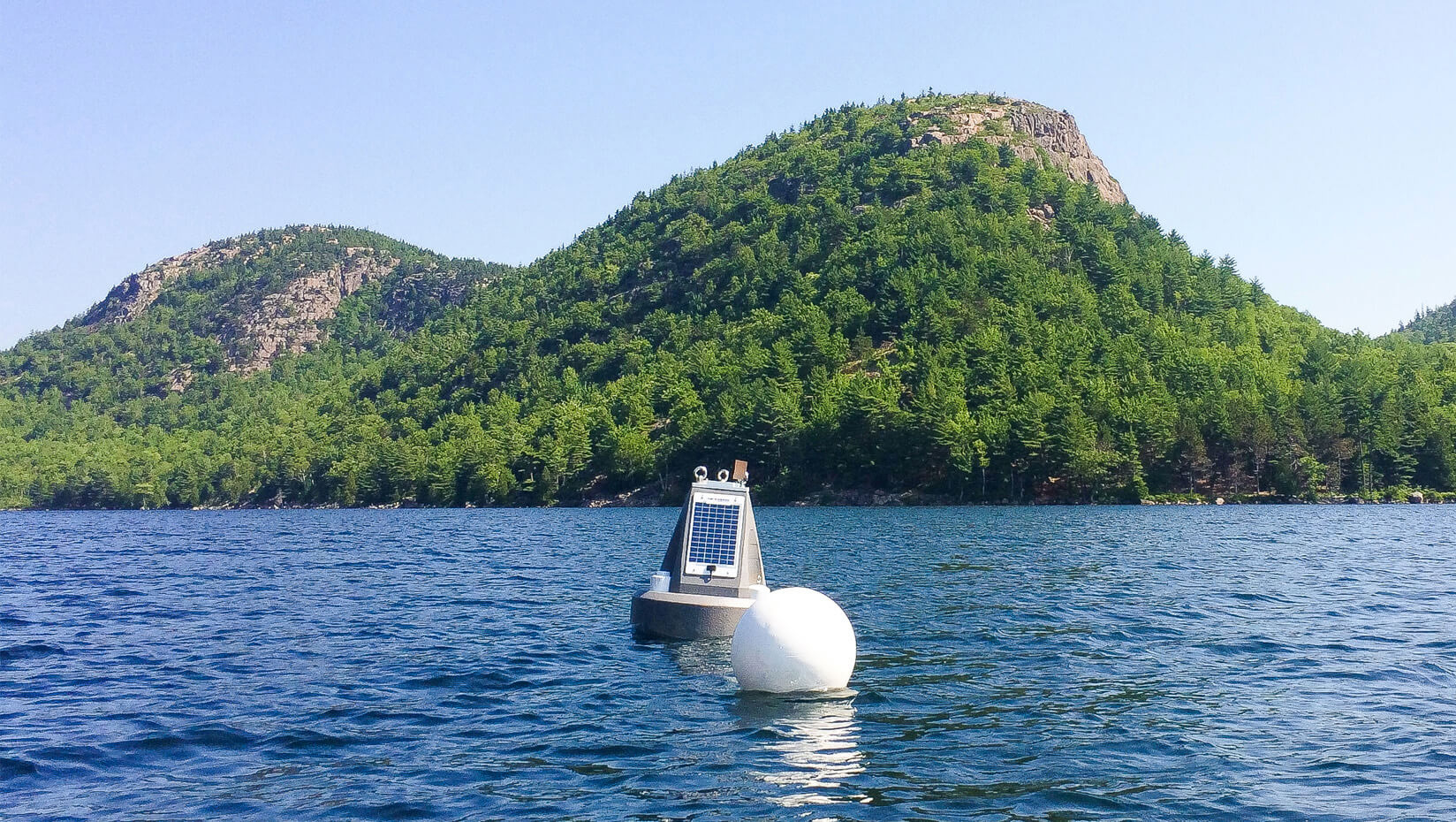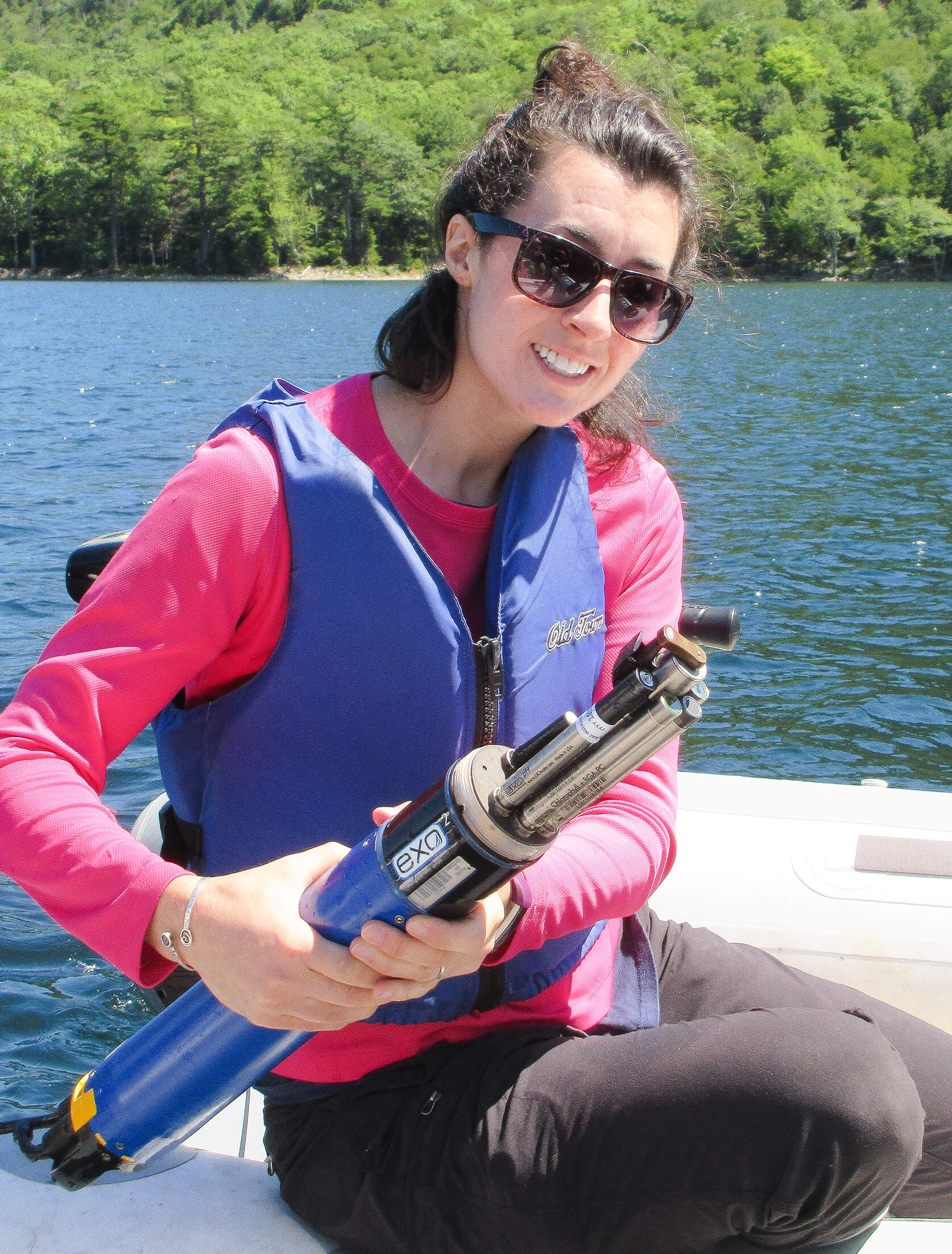
Fowler’s clear focus: Understanding drivers of Jordan Pond water clarity changes

More than 3.5 million people took in spectacular views last year at Acadia National Park — including from atop Cadillac Mountain and at Thunder Hole.
Rachel Fowler appreciates the view at Jordan Pond.
The University of Maine research scientist calls the lake, which supplies drinking water to residents in the village of Seal Harbor and is one of the clearest bodies of water in the state, a crown jewel.
Kayakers and other boaters can typically see to about 40 feet beneath the surface of the 150-foot-deep, glacier-formed mountain pool.
As of late, though, Fowler says extreme storms may have impacted the water clarity of the pond, as well as other lakes and ponds in Maine.
Fowler, who earned her doctorate in ecology and environmental sciences in 2019 at UMaine, strives to be a best possible steward of the pond.
She’s part of the collaborative Jordan Pond Buoy Project that involves the University of Maine Climate Change Institute, the National Park Service and Friends of Acadia.
Since 2013, during ice-free months, the collaborative has deployed a state-of-the-art buoy in Jordan Pond. Each day, the 4-foot-tall, 3-foot-diameter buoy collects more than 1,400 measurements — including water temperature, pH, salinity, dissolved oxygen, organic matter and chlorophyll. Those measurements are posted twice daily on the Jordan Pond Buoy website.
While swimming isn’t allowed in Jordan Pond, it is in nearby Echo Lake. Fowler says some people visit the Jordan Pond Buoy website to check the temperature to help them decide whether it’s warm enough to head to Echo Lake for a dip. (Probably not many did Oct. 30, when the warmest water temperature of the day was 53.6 F.)
A weather station mounted on the nearby Jordan Pond House monitors air temperature, wind speed and direction, rainfall and barometric pressure.
All together, the measurements give researchers insights into the drivers of the change in the pond’s water clarity.
Fowler, a Maine native who grew up in the woods of Westfield, appreciates lakes. And she wants to protect them.
“My research interests lie at the intersection of natural science and social and human systems,” says Fowler. “I’m a lake ecologist. Changes are happening in Jordan Pond and this is an ideal place for me to apply my training.”
Because the 187-acre pond is within the boundary of Acadia National Park, its watershed is highly protected. Extreme storms, though, can result in increased organic matter ending up in the pond. Air pollution also affects the pond, says Fowler.
Decades ago, sulfur and nitrogen emissions were negatively impacting the quality of Jordan Pond. But the 1990 amendment to the Clean Air Act reduced those emissions. And, eventually, Jordan Pond rebounded.
People interested in following the project, learning more about researchers and seeing scenic photos of Acadia National Park are invited to visit the Jordan Pond Buoy project website, as well as follow its accounts on Instagram (jpbuoy) and Twitter (@JPbuoy).
In addition, people in the Jordan Pond House Restaurant waiting area who are anticipating a table to enjoy popovers and tea are invited to participate in an interactive iPad presentation about the project.
Fowler says the buoy, which was pulled from the pond a couple of weeks ago, will be cleaned and its sensors examined and serviced, if necessary, this winter.
“Now we’re wondering what’s happening below the ice,” she says, adding that temperature and oxygen sensors may eventually be deployed throughout the winter.

